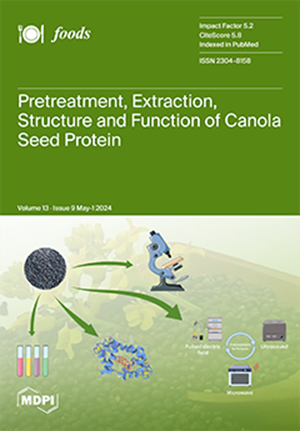An Overview of Interactions between Goat Milk Casein and Other Food Components: Polysaccharides, Polyphenols, and Metal Ions
IF 4.7
2区 农林科学
Q1 FOOD SCIENCE & TECHNOLOGY
引用次数: 0
Abstract
Casein is among the most abundant proteins in milk and has high nutritional value. Casein’s interactions with polysaccharides, polyphenols, and metal ions are important for regulating the functional properties and textural quality of dairy foods. To improve the functional properties of casein-based foods, a deep understanding of the interaction mechanisms and the influencing factors between casein and other food components is required. This review started by elucidating the interaction mechanism of casein with polysaccharides, polyphenols, and metal ions. Thermodynamic incompatibility and attraction are the fundamental factors in determining the interaction types between casein and polysaccharides, which leads to different phase behaviors and microstructural types in casein-based foods. Additionally, the interaction of casein with polyphenols primarily occurs through non-covalent (hydrogen bonding, hydrophobic interactions, van der Waals forces, and ionic bonding) or covalent interaction (primarily based on the oxidation of proteins or polyphenols by enzymatic or non-enzymatic (alkaline or free radical grafting) approaches). Moreover, the selectivity of casein to specific metal ions is also introduced. Factors affecting the binding of casein to the above three components, such as temperature, pH, the mixing ratio, and the fine structure of these components, are also summarized to provide a good foundation for casein-based food applications.山羊奶酪蛋白与其他食物成分之间的相互作用概述:多糖、多酚和金属离子
酪蛋白是牛奶中含量最高的蛋白质之一,具有很高的营养价值。酪蛋白与多糖、多酚和金属离子的相互作用对于调节乳制品食品的功能特性和质构质量非常重要。为了改善酪蛋白食品的功能特性,需要深入了解酪蛋白与其他食品成分之间的相互作用机制和影响因素。本综述首先阐明了酪蛋白与多糖、多酚和金属离子的相互作用机理。热力学不相容性和吸引力是决定酪蛋白与多糖之间相互作用类型的基本因素,这导致了酪蛋白食品中不同的相行为和微观结构类型。此外,酪蛋白与多酚的相互作用主要是通过非共价(氢键、疏水作用、范德华力和离子键)或共价(主要是通过酶或非酶(碱性或自由基接枝)方法使蛋白质或多酚氧化)发生的。此外,还介绍了酪蛋白对特定金属离子的选择性。此外,还总结了影响酪蛋白与上述三种成分结合的因素,如温度、pH 值、混合比以及这些成分的精细结构,从而为酪蛋白食品的应用奠定了良好的基础。
本文章由计算机程序翻译,如有差异,请以英文原文为准。
求助全文
约1分钟内获得全文
求助全文
来源期刊

Foods
Immunology and Microbiology-Microbiology
CiteScore
7.40
自引率
15.40%
发文量
3516
审稿时长
15.83 days
期刊介绍:
Foods (ISSN 2304-8158) is an international, peer-reviewed scientific open access journal which provides an advanced forum for studies related to all aspects of food research. It publishes reviews, regular research papers and short communications. Our aim is to encourage scientists, researchers, and other food professionals to publish their experimental and theoretical results in as much detail as possible or share their knowledge with as much readers unlimitedly as possible. There is no restriction on the length of the papers. The full experimental details must be provided so that the results can be reproduced. There are, in addition, unique features of this journal:
manuscripts regarding research proposals and research ideas will be particularly welcomed
electronic files or software regarding the full details of the calculation and experimental procedure, if unable to be published in a normal way, can be deposited as supplementary material
we also accept manuscripts communicating to a broader audience with regard to research projects financed with public funds
文献相关原料
| 公司名称 | 产品信息 | 采购帮参考价格 |
|---|
 求助内容:
求助内容: 应助结果提醒方式:
应助结果提醒方式:


